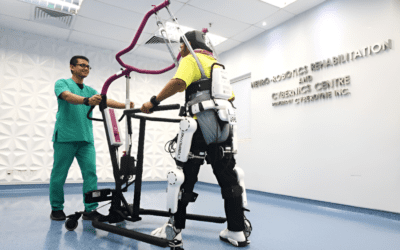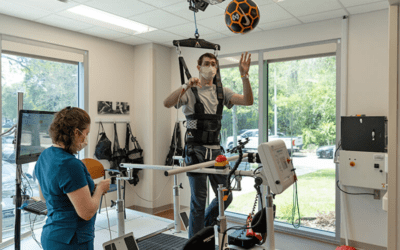Spinal Cord Stimulation (SCS) implants offer a groundbreaking solution for individuals suffering from chronic pain, particularly in conditions like failed back surgery syndrome, complex regional pain syndrome (CRPS), and neuropathic pain.
By delivering mild electrical impulses to the spinal cord, SCS modulates pain signals before they reach the brain, effectively reducing pain perception.
How Spinal Cord Stimulation (SCS) Transforms Chronic Pain Management

Spinal Cord Stimulation (SCS) technology offers a revolutionary approach to managing chronic pain by targeting the source of the pain signals within the spinal cord. Unlike traditional treatments that focus on masking symptoms with medications, SCS works by interrupting pain signals before they reach the brain, providing long-lasting relief and improving overall quality of life.
How SCS Works:
- Implantation of the Device:
- A small, surgically implanted device with leads is placed near the spinal cord.
- The device delivers electrical pulses to the spinal cord, interrupting pain signals.
- Customization for Pain Relief:
- The stimulation intensity and pulse frequency can be adjusted to suit individual pain patterns and preferences, often offering significant relief.
- Minimally Invasive:
- The procedure is minimally invasive, and patients typically experience shorter recovery times compared to traditional surgery.
Benefits of SCS Implants:
- Chronic Pain Management: Effective for conditions that don’t respond to other treatments like medication or physical therapy.
- Non-Addictive Alternative: Provides a non-opioid solution to chronic pain, reducing reliance on medications.
- Improved Quality of Life: Helps patients regain mobility, function, and independence.
- Reversible: The implant can be turned off or removed if necessary, offering flexibility and safety.
Risks of SCS Implants:
Apart from the benefits SCS carries some risks, such as infection, device malfunction, or nerve damage, though these are rare. The procedure is minimally invasive with a quick recovery, making it a safe option for many patients. Careful evaluation by a healthcare provider ensures its suitability for individual conditions.
Advancing Pain Relief:
SCS implants are a game-changer in pain management, offering a personalized and reversible approach to achieving pain relief. By harnessing cutting-edge technology, individuals can unlock the potential for a more active, pain-free lifestyle, moving beyond the limitations of chronic pain.
How Spinal Cord Stimulation (SCS) Technology Transforms Chronic Pain Management
Spinal Cord Stimulation (SCS) technology offers a revolutionary approach to managing chronic pain by targeting the source of the pain signals within the spinal cord. Unlike traditional treatments that focus on masking symptoms with medications, SCS works by interrupting pain signals before they reach the brain, providing long-lasting relief and improving overall quality of life and pain-free living.
A comprehensive guide to SCS

Spinal Cord Stimulation (SCS) is a promising solution for managing chronic pain when other treatments have failed, offering personalized relief through electrical pulses. It’s suitable for conditions like failed back surgery syndrome, CRPS, and neuropathic pain, but requires a trial phase to determine its effectiveness. Consult with a healthcare provider to assess if SCS is right for your specific condition and pain management needs.
Here are a few real-life patient success stories that highlight the transformative impact of Spinal Cord Stimulation (SCS) implants:
1. Overcoming Failed Back Surgery Syndrome
John’s Story: John, a 52-year-old man, had undergone multiple back surgeries after a car accident but continued to suffer from debilitating lower back pain and sciatica. After years of relying on opioid medications with little relief, he opted for an SCS trial. Within days, John reported a significant reduction in pain, allowing him to stop taking painkillers and return to activities like gardening and walking with his family. After a successful trial, he underwent permanent SCS implantation and now enjoys a pain-free life with greater mobility and independence.
2. Finding Relief from Complex Regional Pain Syndrome (CRPS)
Sarah’s Story: Sarah, a 39-year-old woman, was diagnosed with CRPS following a severe ankle injury. The pain was so intense that she couldn’t walk or even touch the affected area without excruciating discomfort. After trying multiple treatments, including nerve blocks and physical therapy, she turned to SCS. The trial phase of the device provided her with immediate pain relief, and after permanent implantation, she regained full use of her leg and was able to return to her job as a nurse. The SCS allowed her to reduce her reliance on pain medications and live a much more active life.
3. Pain Management After Spinal Surgery
Tom’s Story: Tom, a 60-year-old man, struggled with chronic pain after a series of spinal surgeries for a herniated disc and spinal stenosis. Despite undergoing surgery and trying various pain management techniques, he was still in constant pain and unable to enjoy daily activities. Tom underwent an SCS trial and found relief within a few days, leading him to pursue permanent implantation. Since then, he has reported a dramatic improvement in his quality of life, with pain reduced by 70%, allowing him to resume exercising and spending time with his grandchildren.
4. Living Pain-Free After Years of Neuropathic Pain
Linda’s Story: Linda, a 47-year-old woman, had been dealing with severe neuropathic pain in her legs for over a decade due to diabetic neuropathy. Medications had limited effectiveness, and the pain kept her from enjoying basic daily tasks. After being introduced to SCS, she underwent a trial phase and immediately felt relief from the constant burning and tingling sensations. After the permanent implant, Linda was able to walk without assistance and significantly reduced her need for pain medication. Today, she enjoys an active lifestyle and is grateful for the transformative effect of SCS on her life.
5. Reclaiming Life After Chronic Sciatica
Mike’s Story: Mike, a 45-year-old construction worker, had been battling severe sciatica for years. His pain was so intense that he had to quit his job and was unable to perform even basic activities like lifting his children. After exhausting all other options, Mike tried SCS. The trial phase was a success, and he noticed a 90% reduction in pain. Now with his permanent SCS implant, Mike has returned to work, enjoys playing sports again, and has regained the freedom he thought he had lost forever.
These success stories highlight the significant potential of Spinal Cord Stimulation in improving the quality of life for those suffering from chronic pain. Many patients experience reduced pain, increased mobility, and a return to the activities they once enjoyed, offering hope for a future without constant discomfort.
Spinal Cord Stimulation (SCS) implants offer a transformative solution for chronic pain, providing long-lasting relief and reducing dependency on pain medications. With personalized treatment, SCS can unlock a pain-free life and restore mobility and independence.



